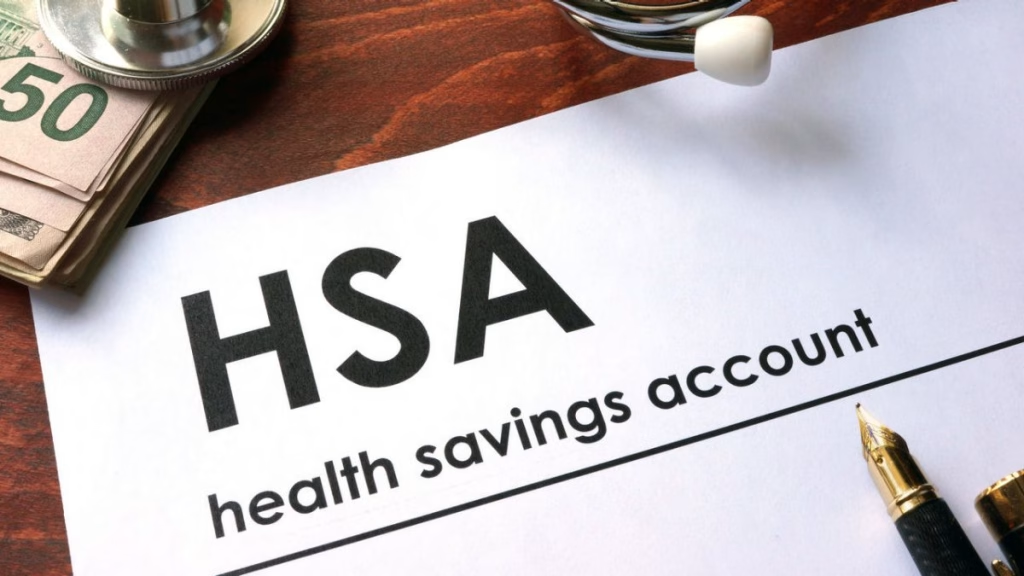When it comes to saving for retirement, most people think of 401(k)s and IRAs. But there’s another powerful tool that often goes overlooked: the Health Savings Account (HSA). Designed to help you save for medical expenses, an HSA can also be a secret weapon for building your retirement nest egg.

With its triple tax advantage, an HSA offers unique benefits that can supercharge your retirement savings. In this blog, we’ll show you how to maximize your HSA for retirement and make the most of this underrated financial tool.
What is an HSA?
A Health Savings Account (HSA) is a tax-advantaged savings account available to individuals with a high-deductible health plan (HDHP). It allows you to save money for qualified medical expenses while enjoying significant tax benefits.
The Triple Tax Advantage of an HSA
What makes an HSA so powerful? It offers three key tax benefits:
- Tax-Deductible Contributions: Contributions to your HSA are tax-deductible, reducing your taxable income.
- Tax-Free Growth: Any interest or investment earnings in your HSA grow tax-free.
- Tax-Free Withdrawals: Withdrawals for qualified medical expenses are tax-free.
This triple tax advantage makes the HSA one of the most tax-efficient savings vehicles available.
How to Use Your HSA for Retirement
While HSAs are designed for medical expenses, they can also be a valuable retirement savings tool. Here’s how to maximize your HSA for retirement:
1. Contribute the Maximum Allowed
For 2025, the contribution limits are:
- $4,300 for individuals.
- $8,550 for families.
- An additional $1,000 catch-up contribution if you’re 55 or older.
Maximizing your contributions ensures you’re taking full advantage of the tax benefits and building a larger nest egg.
2. Invest Your HSA Funds
Many HSAs allow you to invest your contributions in mutual funds, stocks, or other investment options. By investing your HSA funds, you can grow your savings significantly over time.
Pro Tip: Treat your HSA like a retirement account by investing in a diversified portfolio aligned with your risk tolerance and time horizon.
3. Pay for Medical Expenses Out of Pocket
If possible, pay for current medical expenses out of pocket and leave your HSA funds untouched. This allows your contributions to grow tax-free over time.
Why This Works: You can reimburse yourself for qualified medical expenses at any time, even years later. By delaying withdrawals, you give your HSA more time to grow.
4. Save Receipts for Future Reimbursements
Keep detailed records of all qualified medical expenses. In retirement, you can withdraw funds tax-free to reimburse yourself for these expenses, effectively turning your HSA into a tax-free income source.
5. Use Your HSA as a Supplemental Retirement Account
After age 65, you can withdraw funds from your HSA for any purpose without penalty (though non-medical withdrawals are subject to income tax). This makes your HSA function like a traditional IRA, but with the added benefit of tax-free withdrawals for medical expenses.
The Benefits of Using an HSA for Retirement
- Tax-Free Growth: Unlike a 401(k) or IRA, your HSA earnings grow tax-free.
- Flexibility: You can use your HSA for medical expenses now or save it for retirement.
- No Required Minimum Distributions (RMDs): Unlike IRAs, HSAs have no RMDs, allowing your savings to grow indefinitely.
- Lower Healthcare Costs in Retirement: By saving for future medical expenses, you can reduce the financial burden of healthcare in retirement.
Common HSA Mistakes to Avoid
- Not Contributing Enough: Failing to maximize your contributions means missing out on valuable tax benefits.
- Using Your HSA for Non-Medical Expenses: Withdrawals for non-qualified expenses before age 65 are subject to taxes and a 20% penalty.
- Not Investing Your HSA Funds: Letting your contributions sit in cash means missing out on potential growth.
- Forgetting to Save Receipts: Without proper documentation, you may miss out on tax-free reimbursements in the future.
Final Thoughts
An HSA is more than just a way to save for medical expenses—it’s a powerful retirement savings tool. By maximizing your contributions, investing your funds, and strategically planning your withdrawals, you can turn your HSA into a key component of your retirement strategy.
If you’re eligible for an HSA, don’t overlook its potential. Start maximizing your HSA today and take control of your financial future.
